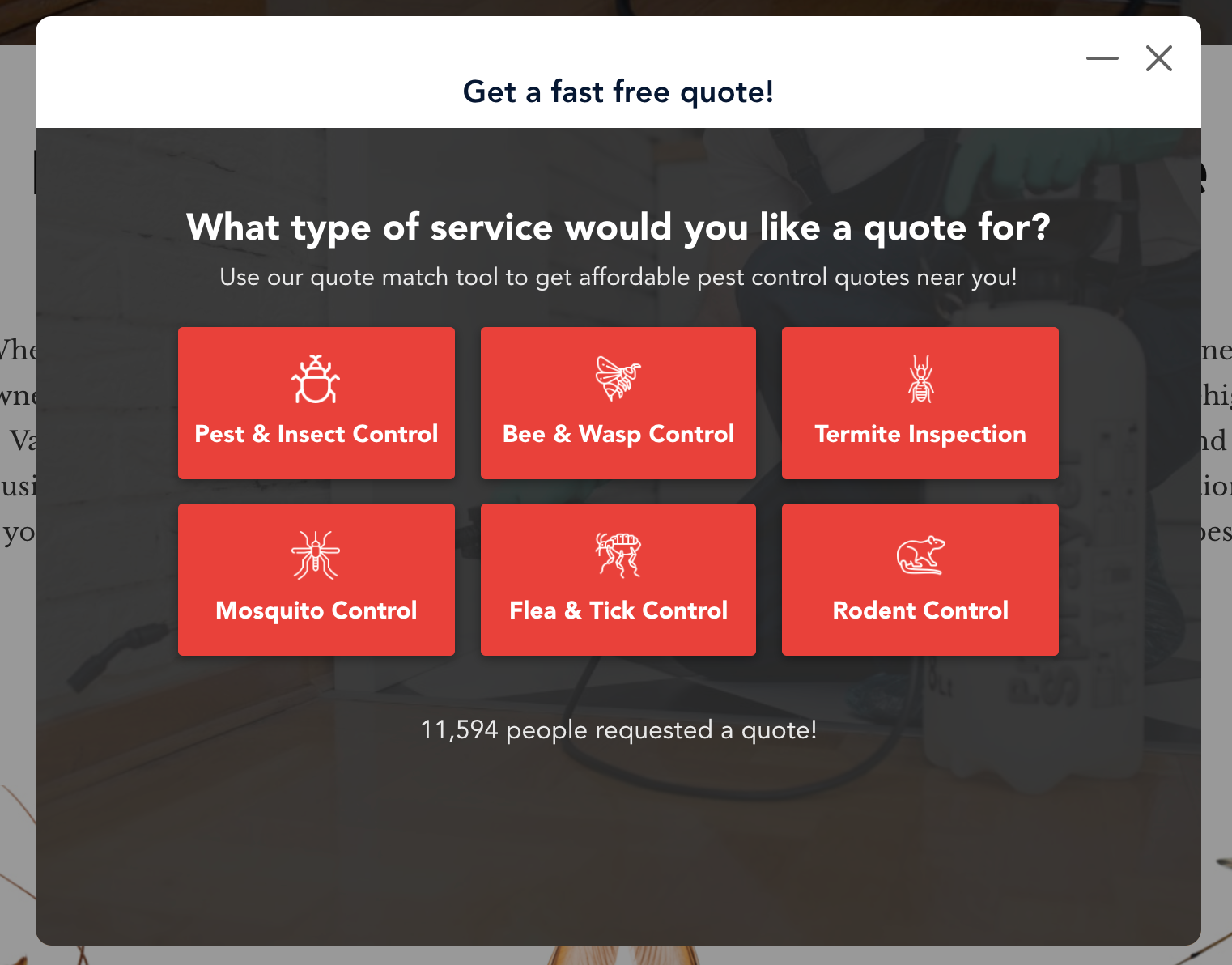When it comes to Facebook lead form vs landing page forms, we actually prefer using landing page forms to generate new leads.
In fact, we’ve worked with one business that spent $35,000 on a Facebook lead form ad and the results were terrible! More on that a little later…
In this article, we are going to compare the performance of using a facebook lead form vs landing page forms and give you 7 strategies to get more qualified leads for your business today.
Ultimately, you want to begin with your business goals in mind.
Instead of simply trying to get more people to fill out your lead gen form, pay careful attention to how you can increase sales, boost conversion rates, and maximize the revenue generated, with the lowest cost of ad spend. More leads on the front end doesn’t necessarily translate to that.
“10 leads that turn into paying customers are a lot better than bringing in 100 leads that don’t convert at all.”
We’ll start off this article by getting familiar with the two different types of lead generation forms you can use.
Ready? Let’s go!
What is One of the Major Benefits of Facebook Lead Ads?
A Facebook Lead Ad is an email opt-in form that’s populated inside of the Facebook interface. The major benefit is that Facebook users never have to leave the platform and go through the extra step of navigating through your website.
How Facebook Lead Ads Work:
- Users see your advertisement,
- The form is pre-populated with their Facebook contact information.
- A single click of a button is all that’s needed for the process to be complete.
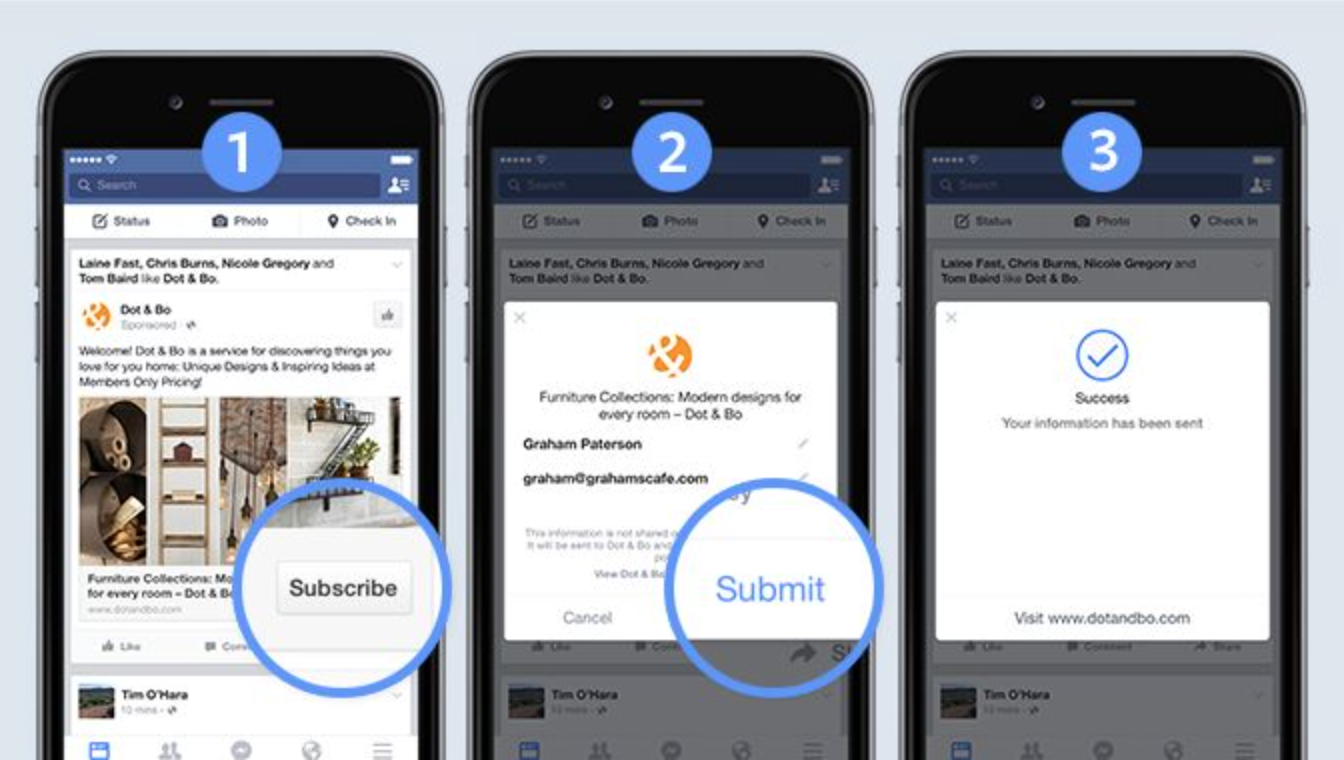
Everything else about the ad is virtually the same. You can choose your targeting, headlines, text, and select images. Users can comment on the ad, like it, and share it with their friends.
At face value this seems like a dream for marketers everywhere because Facebook users can become leads without even having to go to your website.
But from a back-end marketing perspective, there are many reasons why we caution people away from using Facebook Lead ads.
Many business owners choose Facebook lead form ads when they have trouble getting conversion through forms on their website.
The ultimate test is: Do these users convert to sales at a profitable rate?
What Is a Landing Page Form?
On the flip side of that, a landing page form is a lead generation form that is hosted on your website. Unlike traditional lead generation forms that blend into your website, the landing page form you see below is designed to have your customers flow through the customer journey experience all while priming them for the conversion.
- A potential customer clicks through your advertisement,
- They land on your website to see if your services are the right fit for them, and
- Customers sign up through an interactive and personalized process.
For instance, Here’s an example of a landing page lead form that a GetLeadForms customer is using on their landing pages. In this case, the customer is using a conversational form to engage users, right on their page. You can read the case study here.
We’ll get into more details shortly, but the main difference between the two is whether they click-to-submit the pre-populated form on Facebook vs. they fill out the form on your website.
7 Reasons Why We Choose Landing Page Forms Over Facebook Lead Form Ads
When thinking about facebook lead form vs landing page forms, let’s start off with the benefits of using Facebook Lead Ads.
On the front end, you’ll get more leads coming in and the cost per lead may be cheaper.
From a technical standpoint, the system is more streamlined where users stay within the Facebook ad platform and have a more direct call-to-action. This is especially true when you use older, outdated methods of collecting leads through your website.
The fields on the Facebook forms auto-populate and people can sign up for your newsletter with minimal effort required.
But along with these benefits comes their own unique set of problems.
1) Facebook Lead Ads May Not Convert As Well as Landing Page Forms
As a marketer or business owner, you want to run advertisements to convert leads into sales. When the signup process is easier, the conversion rates may begin to suffer, like the business example below.
Case Study: 1% Open Rates and 13,000 Leads Lost Forever from Facebook Lead Ads
A business we came in contact with spent more than $35,000 in Facebook Lead Ads to build out an email list of more than 15,000 people. If you’re doing that math, that’s a great Facebook lead ads cost ($2.33 CPL).
“Less than 1% of them even opened an email, with a fraction of a percent clicking through to see the offer.”
After months of cleaning up the list and removing the inactive ones that never opened up an email, only about 2,000 of them remained. The average open rate after that was still between 7% and 15%.
This business never came close to recouping their $35,000 investment and struggled for years to get their business off the ground.
While you may see an increased quantity of leads with facebook lead form ads, pay close attention to these back-end metrics to see if the leads actually convert:
- Email Deliverability Rates,
- Bounces from Bad Email Addresses,
- Open Rates,
- Click-Through-Rates,
- Spam Complaints,
- Conversions to Paying Customers, and
- Repeat Purchases
You may have other types of metrics depending on the type of business you’re in, but in general you want to pay attention to the quality and responsiveness of your leads.
For the business described above, the results didn’t come in. Let us know your experience with Facebook Lead Forms and your business.
Why landing page forms win: When you use a custom landing page you send people into your own environment with your own branding. This existing brand recognition will go a long way when you go to contact the lead.
2) With Facebook Lead Generation Ads, the Lead Quality is Lower
Building upon the previous point, you want to be seen and known by the people you contact.
If you’re anything like me, I signed up for Facebook close to a decade ago from an email address I barely use anymore. Therefore, it’s safe to say that it wouldn’t deliver the follow-up emails to an inbox I regularly monitor.
In marketing, there is a concept called ‘customer investment’.
“The more a person invests themselves into your business or brand, the more likely they are to make a purchase from you.”
If somebody sees an advertisement that is appealing to them and all they do is click a button to be added to your list – there’s not much investment on their part to build a deeper customer-business connection.
Years after signing up for a newsletter, I check that inbox, an email comes in, and I think to myself, “Who the heck are these people?” I unsubscribe from the list unless there is some insanely-high level of trust from the sender and the offer is immediately appealing to me.
Don’t make that mistake and be sure to qualify the leads that do come in.
Why landing page forms win: You can use a high multi step form to amaze visitors and boost conversion rates, like this LeadForm. This fun, conversational form holds attention longer, allowing you to qualify the lead.
You can even add some subtle personalization to this form by working the visitor’s name right into the copy — something that you can’t do with a Facebook Lead Form. According to Statista, 90% of U.S. consumers find marketing personalization very or somewhat appealing.

You can literally add this form to your website in just a few clicks with a template below.
3) Facebook Privacy Concerns & Data Collection
There is a growing level of scrutiny about how your privacy and personal information is being used and shared on social media platforms. As this distrust grows, people are becoming more protective about how they share their personal information.
In the following examples, where would you be more comfortable sharing your name, phone number, and most personal information?
- Through a large social media platform, or
- A website for a doctor’s office where you want to get more information and schedule an appointment?
Obviously, those are two opposite ends of the spectrum, but at a more subtle level, smaller companies and websites are less of a target for attack from hackers and foreign governments.
For many smaller businesses that are looking to build trust in the community, the privacy concerns are smaller for them versus a larger organization. When it comes to lead generation, your customers may be turned off by the privacy policy for facebook lead ads.
Tip: Compliance is a huge deal when it comes to inbound lead generation. If you’re generating leads that you buy and sell from Facebook Ads or any other channel, then we highly recommend generating proof of consent with our ActiveProspect TrustedForm integration.
4) Landing Page Forms Allow for Increased Metrics & Split Testing
Both options allow for certain levels of metrics and optimization. In general, you have more control over A/B split testing and form optimization on your own website. In the following LeadForms Dashboard, you’ll see the different types of customization.
Everything from trying out different form types, different questions, all the way down to the color of the button, and even adding real-time social proof right into your forms — you can’t do that with Facebook lead form ads!
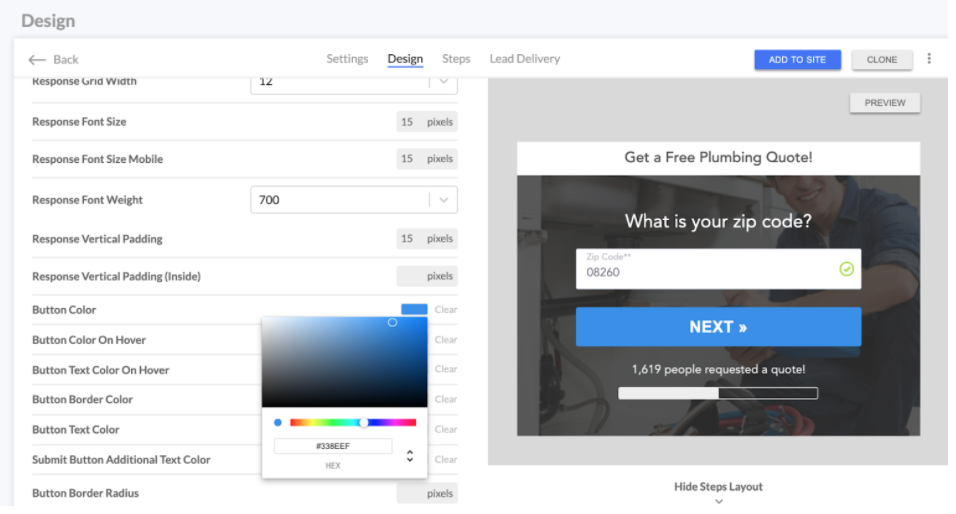
It’s a best practice to split test the following three things on your landing page form first:
- The offer itself,
- The main headline, and
- Any images involved with the form.
When the data starts coming in from hundreds of people signing up for your service, that is the time to start fine tuning all the smaller adjustments. Make sure to monitor your conversion rates for each form and see which elements perform the best.
5) Facebook Lead Forms vs Landing Page Forms: Integrating Into Your Tech Stack is Harder on Facebook
From Google Analytics, Active Campaign, to Zapier, you want to make sure that your technology seamlessly integrates with the landing page forms you’ll be using.
While many websites are hosted on WordPress – Others are using other platforms such as Wix, Clickfunnels, Leadpages, and more.
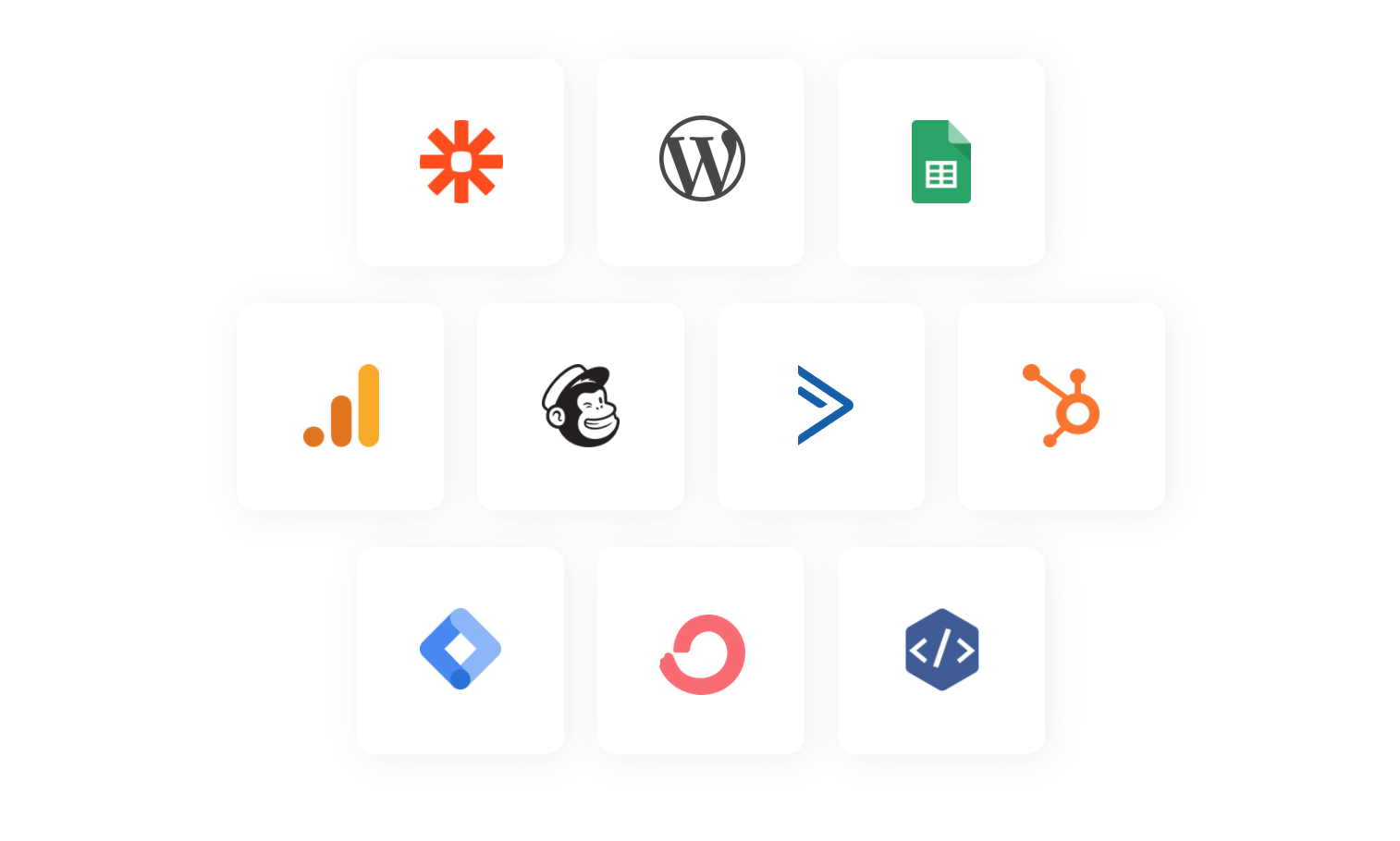
The problem with Facebook Lead Ad Forms is when it comes to integrations. While things such as the Facebook retargeting and conversion pixels work with both, there could be a major gap when your business starts scaling out and using new technology providers. What about Google Analytics? In addition, Facebook provides very few integrations, which makes it harder to post leads into your CRM.
Why Landing Page Forms Win: With landing page forms you can not only easily connect to your CRM but you can also get instant lead notifications via email and SMS. Something that FB lead ads cannot do.
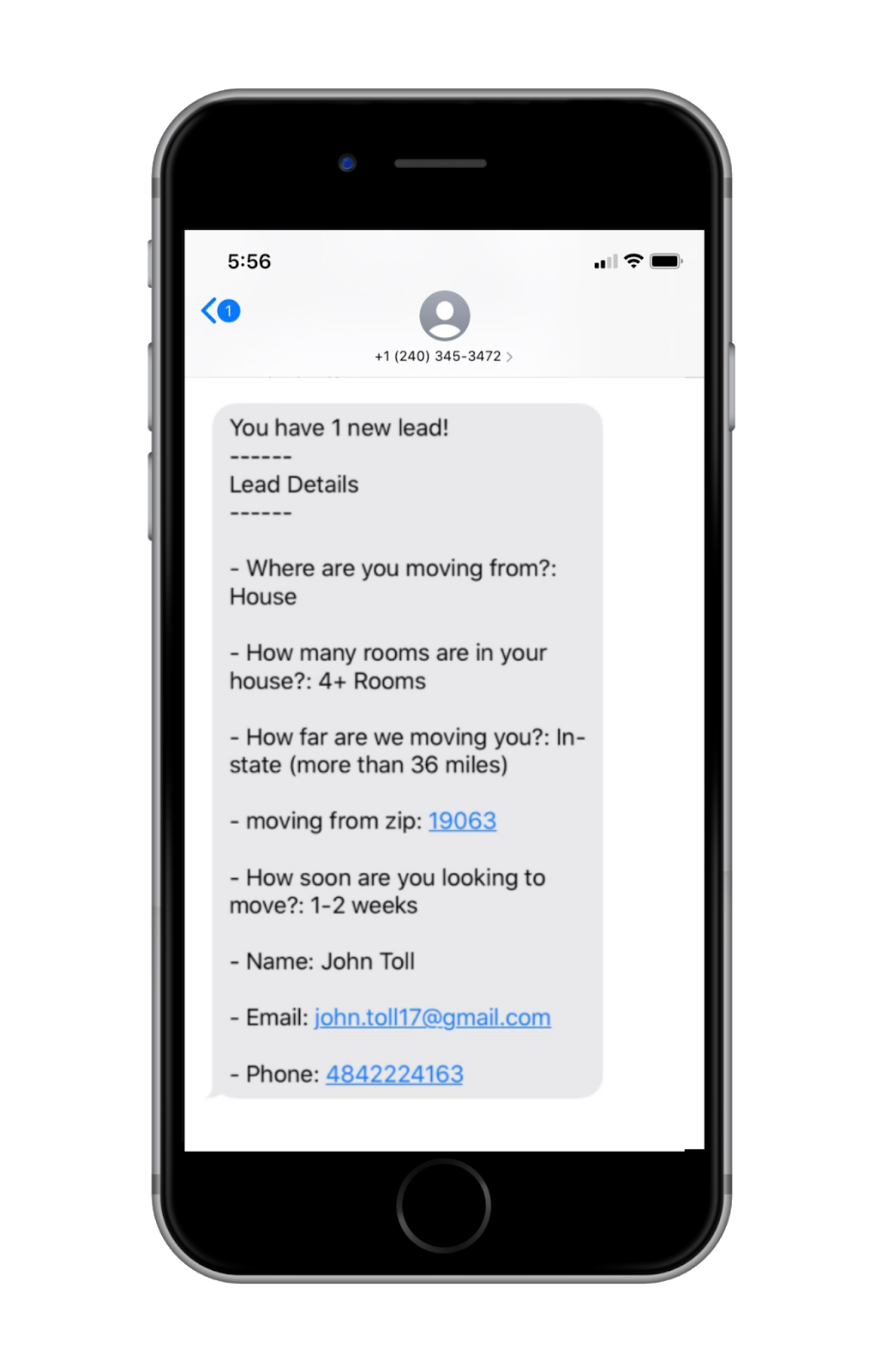
Instant Lead Notification via LeadForms means that your lead response times will be better and you’ll close more deals faster.
6) Landing Page Forms Increase Awareness and Engagement with Your Brand
If you run marketing for a local business such as lawn care, dentistry, plumbing, or a doctor’s office, you know the importance of providing a great service, building customer loyalty, and noticing customers who buy from you again and again over time.
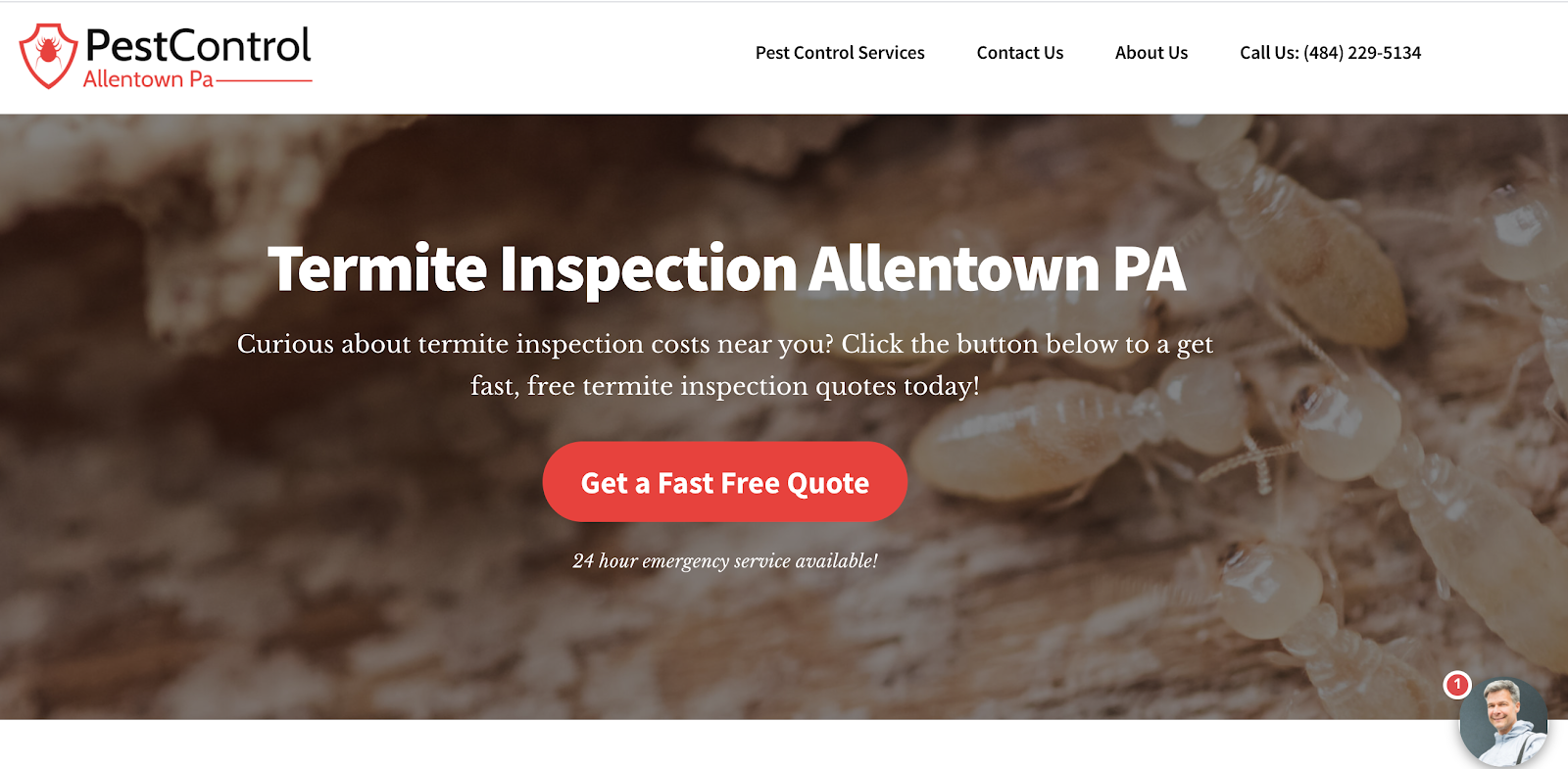
Part of the reason for this is because they are familiar with you. They didn’t pass by you on the street somewhere, and you took the time to build a connection.
“It takes an average of 7 interactions with a person before they are ready to make a purchase from you.”
With landing page forms, you have the ability to start building out some of these 7 interactions while they go through your form, as opposed to simply giving you their name and contact information.
In the same way you would remember a 20-minute long conversation you had with someone at a coffee shop, landing page forms (as seen below) take the time to build that familiarity and connection, in a way that is engaging, entertaining, and benefit-driven for them.
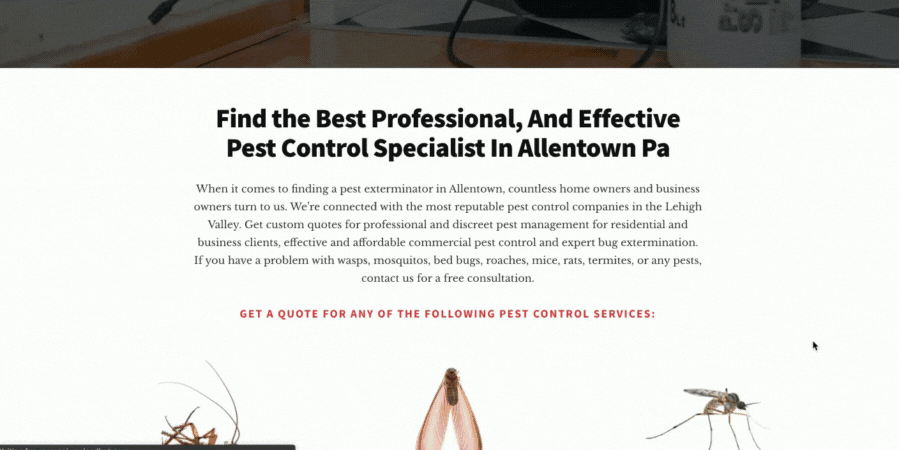
If you’re thinking of using forms on your landing pages, here are 7 lead generation form best practices to help you skyrocket conversions.
7) Two Problems with Landing Page Forms and How to Fix Them
The goal for your landing page form is to ultimately capture the lead. At LeadForms, we like to think that the form is the first touch-point in the conversation, hence why we built “conversational forms”.
Many business owners stick a poorly designed contact form on their site and call it a day. As a result, they struggle to get people to sign up for their email list, fill out lead gen forms on their website, and convert the leads into paying customers.
To do this, you’ll need:
- Quality Traffic: What if you’re sending the wrong people to your website to begin with?
- Increased Conversion Rates: What if a few minor adjustments can make sales take off?
Going into more detail, here’s how to ensure your Landing Page Forms are optimized:
If you have a problem with conversion rates: People may not be signing up for your form. As opposed to Facebook Lead Ads, customers have to go through an extra step of visiting your website before they sign up. This in itself could lower conversion rates significantly.
To overcome this, you want to avoid the mistake of having outdated forms on your website (Name, Email Address, Boring Sales Copy) and increase interaction with your customers. This is why we recommend using conversational forms on your landing pages.
If you have a problem with the quality of your leads: While it is easier for people to sign up through Facebook, remember the example of the business who had to delete 13,000 out of their 15,000 Facebook leads because of the terrible performance rates of their list. A good way to ensure the quality of leads on your landing page form is to pay closer attention to your placements, targeting, and main headline on your landing page. Are you attracting the right type of people to your website with the ads you put out? What different advertisement sources can you open yourself up to, including YouTube Advertisements, local podcasts, Google Search, etc. Don’t limit yourself to one traffic source until you figure out which works best for you.
Don’t give up on your lead generation if things don’t work right away. The right split-testing and optimization will go a long way.
Many people start using Facebook Lead Generation Forms as a quick way to boost the number of email addresses they receive without being properly educated of the advantages and disadvantages of both.
Remember going forward that this quick click-of-a-button on Facebook might increase the number of leads you get and lower the cost of leads on the front end. At the same time it could lower the engagement rate of your email list, decrease deliverability of follow-up material, and ultimately you could be wasting thousands of advertising dollars each month on the low quality traffic from people who may never buy.
And there is always the risk of Facebook shutting your advertising account down without any prior notice. This happened to us once, and it took three days to get Facebook to reinstate our account. So with that said, be sure to stay aware of facebook ads landing page guidelines.
By following some of these tips in this article, the results should speak for themselves.
How to Build Landing Page Forms That Convert
When it comes to turning website visitors into leads, your landing page form is going to make or break your campaign.
The key is to do everything possible to reduce form abandonment.
This is why we built LeadForms.
LeadForms is a conversational form tool that gives you everything you need to build powerful landing page forms that are proven to get you more and better leads than Facebook lead forms ever could.
You can get started with LeadForms today and have your form up and running within minutes by using one of our pre-built starter templates.


